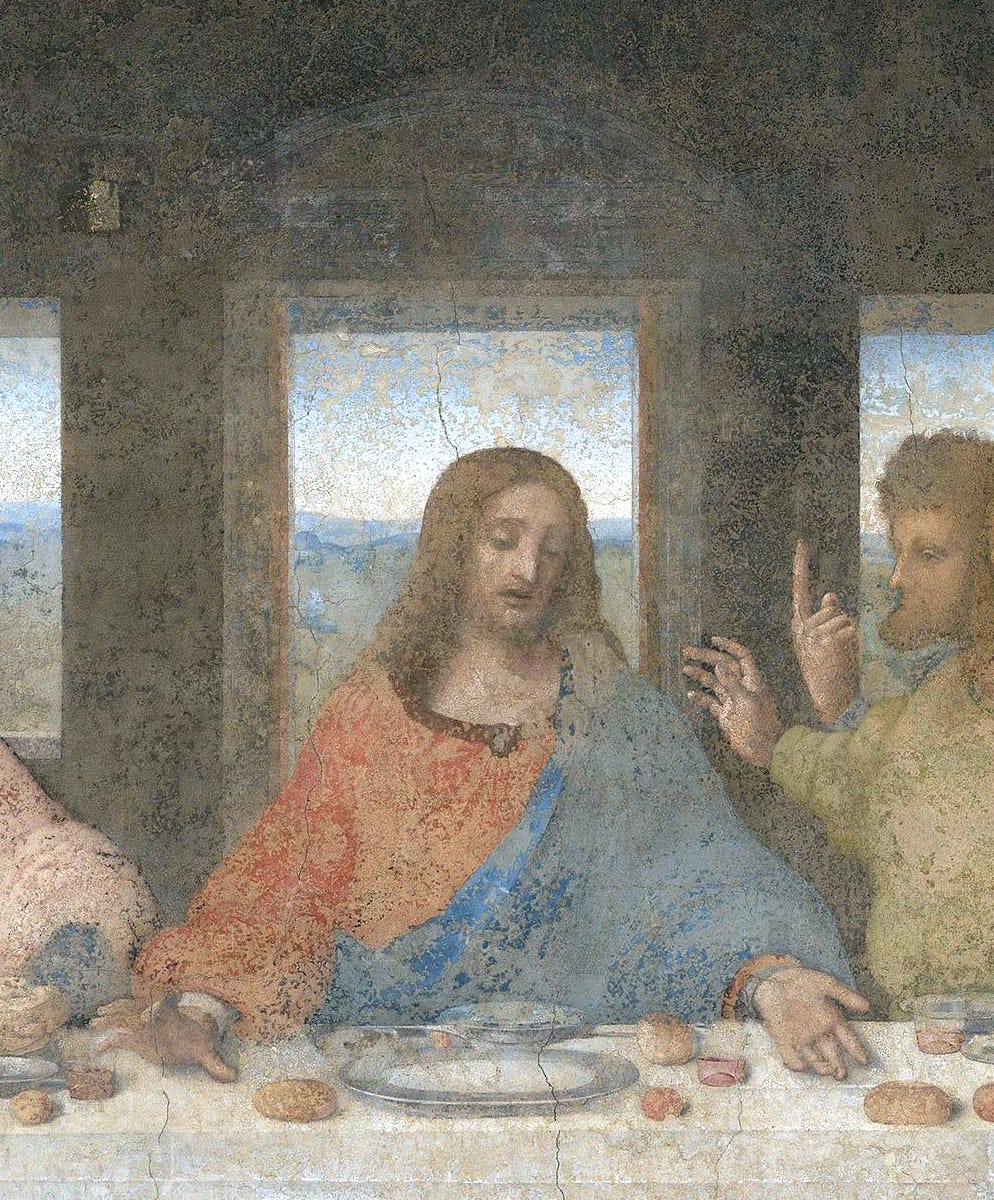Beautiful Offence
Blasphemous art turns out to be more blasphemous than even the artists themselves intended it to be.
I don’t normally get too worked up about blasphemous art. I’m not easily offended. So when the opening ceremonies of the 2024 Paris Olympics attempted their own rendition of Leonardo Da Vinci’s (1452-1519) painting, The Last Supper, I didn’t really care. I have long thought that the Olympics are a sham, and have long been repulsed by the corruption involved at very high levels of the IOC and especially by the vice that follows the Olympics into whatever city hosts them. I’m thinking here of the particularly heinous crime of human sex trafficking. I didn’t care that the Paris Olympics opted for a blasphemous opening ceremony because I didn’t watch it anyway.
Of course, I’ve caught the online fallout. Christians are rightly disturbed at the Parisian rendition of the Last Supper. The Eucharist, along with the Word, is a centrepiece of our worship where we feast spiritually on Christ’s human nature, giving nourishment to our souls. It’s a beautiful, sensory depiction of Christ’s death for us, showing us the depth of love that the Infinite God has for his people. As one person online wrote, however, ‘God can defend himself, I don’t need to. I’m not offended, I’m grieved.’ That pretty much sums up my view. When I look at the faces of those taking part in the mockery, I feel a burden of sadness for them. Not just because of the act of blasphemy, but because they don’t know the Christ who can save them not only from their blasphemous act, but more importantly, who can save them their all of their sin. To know Christ is to know Love, and I want those people to know that Divine Love. Yet here are human beings, creatures of God, made in his image, making fun of him. That’s horribly sad.
Another friend online posted a link to an article that described the Parisian debacle as ‘kitsch tableau’ and I thought that was absolutely correct. Thomas Jolly, the creator of this artistic monstrosity, is just one in a long line of artists whose ‘art’ disparages art. His work is nothing particularly special — it’s not creative, it’s cliché. Yes, it was an offense against God, but it was also an offense against art and beauty itself. It was an aesthetic disaster. Artists should prize beauty, yet so many like Jolly embrace and celebrate what is ugly in this world and in the human heart. As the late Sir Roger Scruton (1944-2020) once explained, this kind of ‘art’ isn’t art at all, and it is especially not beauty, rather, it is beauty’s opposite: it is kitsch. Scruton defined kitsch thusly:
Kitsch is fake art, expressing fake emotions, whose purpose is to deceive the consumer into thinking he feels something deep and serious, when in fact he feels nothing at all.
Not only was this rendition of the Last Supper an affront to the spiritual realities it conveys as part of Christian worship, it was also an affront to Beauty. I capitalise the word now because I’m thinking of Beauty in a more metaphysical sense. Beauty is a transcendental, along with Truth, Goodness, and Unity, and so has a fundamental and universal quality to it that cannot be escaped, only railed at. We live in a culture that prizes lies over Truth, evil over Goodness, and chaos over Unity, so we should not be surprised at what Scruton elsewhere called the ‘cult of ugliness,’ because our culture also prizes ugliness over Beauty.
Transcendentals are called such because they ‘transcend’ traditional categories of explaining the world (particularly Aristotle’s). They point to what lies behind what can be categorised by the human mind. This is why they are inescapable; they are part of the warp and woof of reality, and the intellect knows them intuitively. Christian philosophy argues that the transcendentals are in a sense descriptions of being. Technically, they are not pure synonyms for being, but they accompany being. There is a real distinction between the transcendentals and being, though our intellects can only conceptually distinguish them. As philosopher William Wallace OP (1918-2015) said: ‘The properties are coextensive with being; in them being manifests itself and reveals what it actually is.’ Whatever the case, the transcendentals help us understand the very reality we are a part of, and to trash them is to trash reality. But there is more. Because the Christian tradition has long recognised that God himself is Pure Being Itself (ipsum esse), the transcendentals are ways that we conceptualise God. God is Truth; God is Goodness; God is Unity. And of course, God is Beauty (he’s not just beautiful, though he is that too).
Turning back to Paris for a moment, we can see that the crime that was committed against art was really a crime against Beauty. As such, it was a crime against reality. So it turns out that this uglified Last Supper was not just a specific repudiation of Christ and the Meal that represents his Love for us; at a more fundamental level, it was a repudiation of God himself, who is Being, who is Reality. And, to be honest, that’s the true problem for Jolly and all of those he included in his blasphemy. That’s why it’s so sad, because they live in a godless unreality. Blasphemous art turns out to be more blasphemous than even the artists themselves intended it to be. My prayer is that they would come to know and love the One who is Beauty Itself (ipsum pulchritudo):




